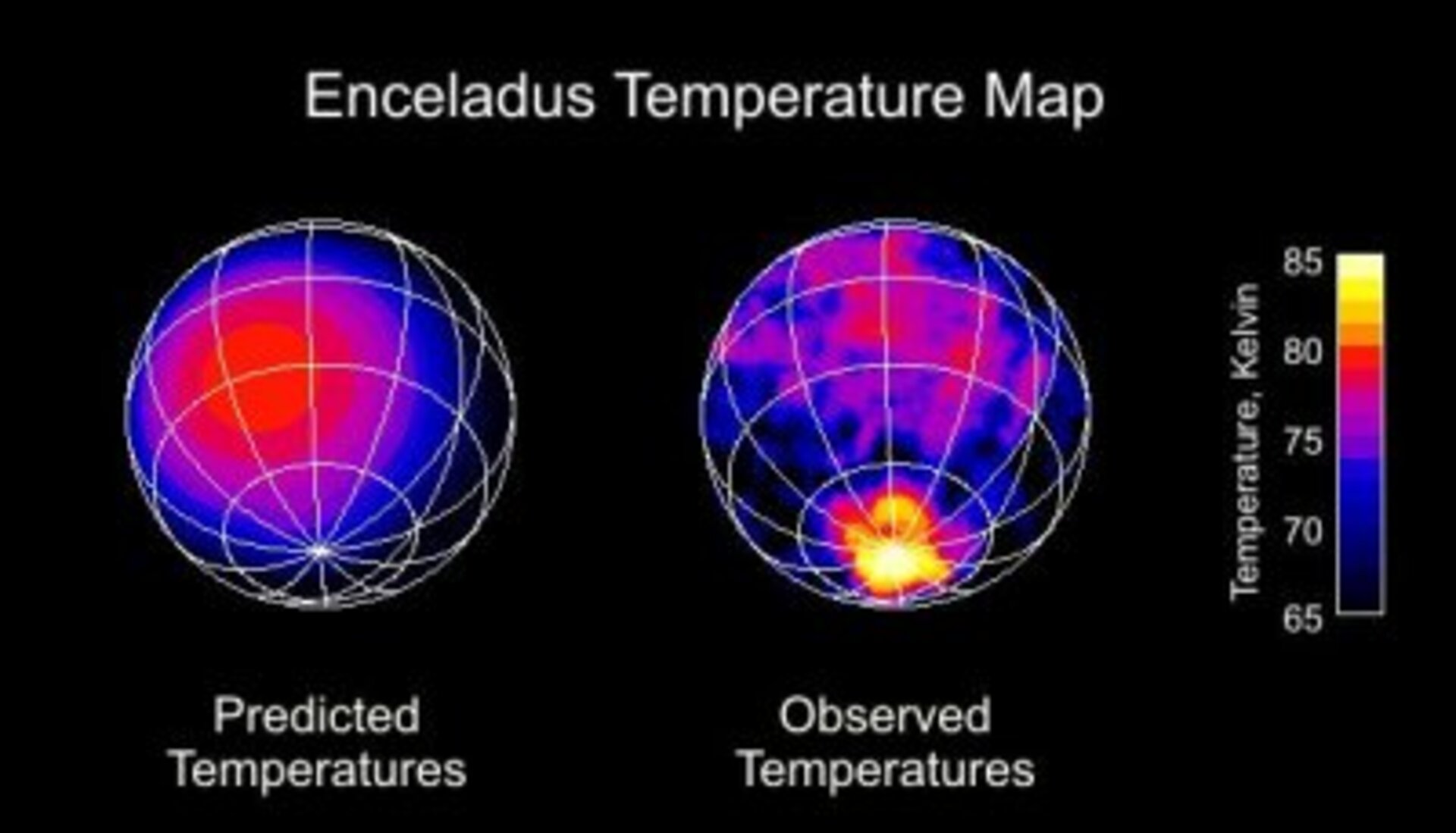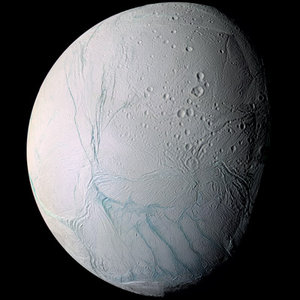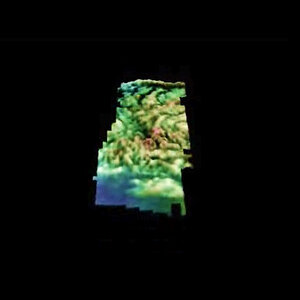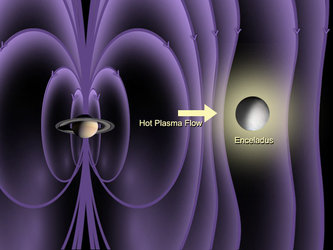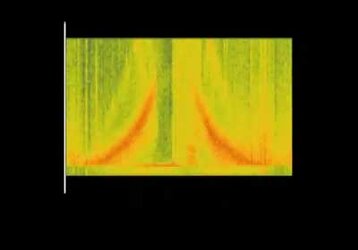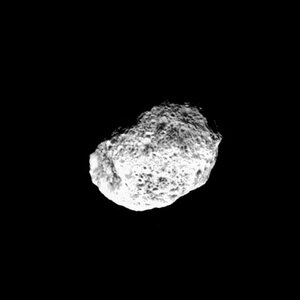Fire and ice on Enceladus
The NASA/ESA/ASI Cassini spacecraft has spotted a dramatic warm spot centred on the south pole of Saturn's moon Enceladus, that is probably a sign of internal heat leaking out of the icy moon.
This image surprised Cassini scientists in the Composite Infrared Spectrometer (CIS) team when they got their first look at the infrared radiation, or heat, from Enceladus.
They saw a dramatic warm spot centred on the pole in data collected during the spacecraft's third fly-by of this intriguing moon on 14 July 2005.
Based on data from previous fly-bys, which did not show the south pole well, team members expected that this pole would be very cold, as shown in the left panel.
Enceladus is one of the coldest places in the Saturn system because its extremely bright surface reflects 80 percent of the sunlight that hits it, so only 20 percent is available to heat the surface. As on Earth, the poles should be even colder than the equator because the Sun shines at such an oblique angle there.
The right panel shows a global temperature image made from measurements of heat radiation from Enceladus at wavelengths between 9 and 16.5 micrometres. Equatorial temperatures are much as expected, topping out at about 80 Kelvin, but the south pole is occupied by a well-defined warm region reaching 85 Kelvin - 15 Kelvin warmer than expected.
The CIS data also suggest that small areas of the pole are at even higher temperatures, well over 110 Kelvin. Evaporation of this relatively warm ice probably generates the cloud of water vapour detected above the south pole by several other Cassini instruments.
These temperatures are very difficult to explain if sunlight is the only energy source heating the surface, though exotic sunlight-trapping mechanisms have not yet been completely ruled out. It seems likely that portions of the pole are warmed by heat escaping from inside the moon.
This would make Enceladus only the third solid body in the Solar System, after Earth and Jupiter's volcanic moon Io, where hot spots powered by internal heat have been detected.
For more information:
Carolina Martinez, NASA Jet Propulsion Laboratory, Pasadena, California, USA
Tel: 001 818 354 9382


